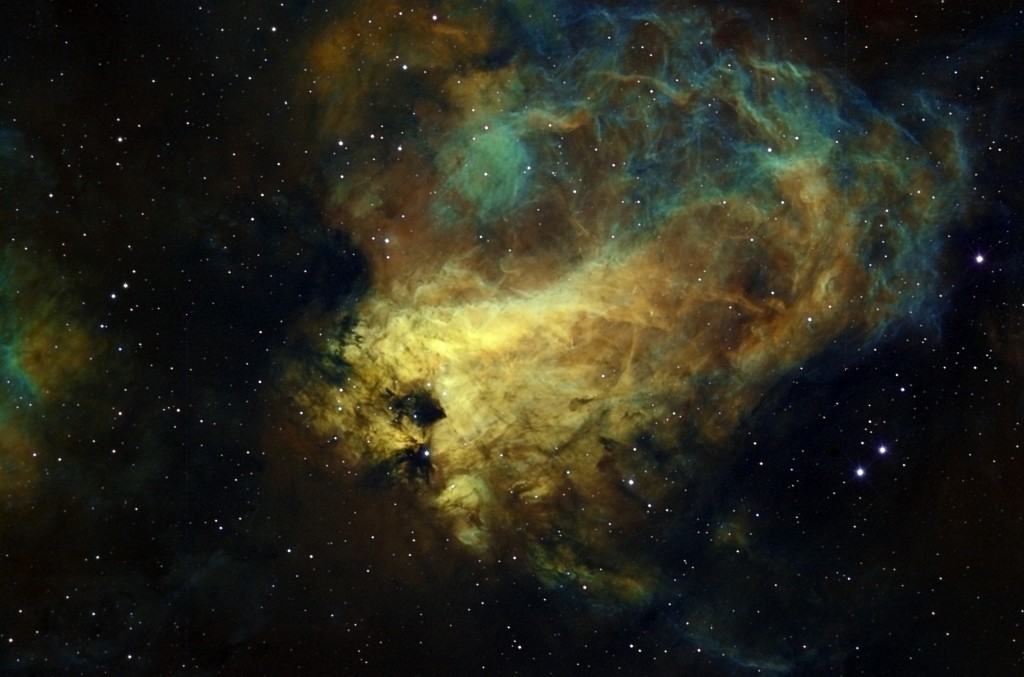 Located in the rich star fields of the Sagittarius area of the Milky Way, the Omega Nebula is one of the brightest and most massive star-forming regions of our galaxy. The visible nebula is illuminated by the massive stellar cluster NGC 6618. The core of the cluster is exceedingly rich in massive young stars and may contain up to 100 “O” and “B” type stars which illuminate the nebula although the stars are heavily obscured by dense and dusty foreground clouds.
Located in the rich star fields of the Sagittarius area of the Milky Way, the Omega Nebula is one of the brightest and most massive star-forming regions of our galaxy. The visible nebula is illuminated by the massive stellar cluster NGC 6618. The core of the cluster is exceedingly rich in massive young stars and may contain up to 100 “O” and “B” type stars which illuminate the nebula although the stars are heavily obscured by dense and dusty foreground clouds.
Right ascension: 18h 20m 48s | Declination: -16° 11′ 04″ | Distance: 5,500 Light Years
Field of view: 57 x 38 arcmin
Camera: SBIG STL-6303E
Telescope: PlaneWave Instruments CDK 12.5 F/7.9
Guiding: External 80mm F/4 guidescope with an Atik 314L+ for guiding
Mount: Paramount PME
Filters: Astrodon Ha (5nm), OIII (5nm), SII (5nm)
Exposures: Ha 24 x 10 min; OIII 24 x 10 min; SII 21 x 10 min
Total exposure: 9.5 hours
Image composition: Colour Mapped Narrowband SII:Ha:OIII (Hubble Palette)
Scale: 0.73 arcsec/pixel
Image acquired: 16-30 July 2013 from AstroCamp, Nerpio, S.E. Spain
Image capture with MaxIm DL, FocusMax, ACP; Image processed with MaxIm DL, Photoshop CS4, FocusMagic (Hubble Palette Colour Mapping following method by Bob Franke)